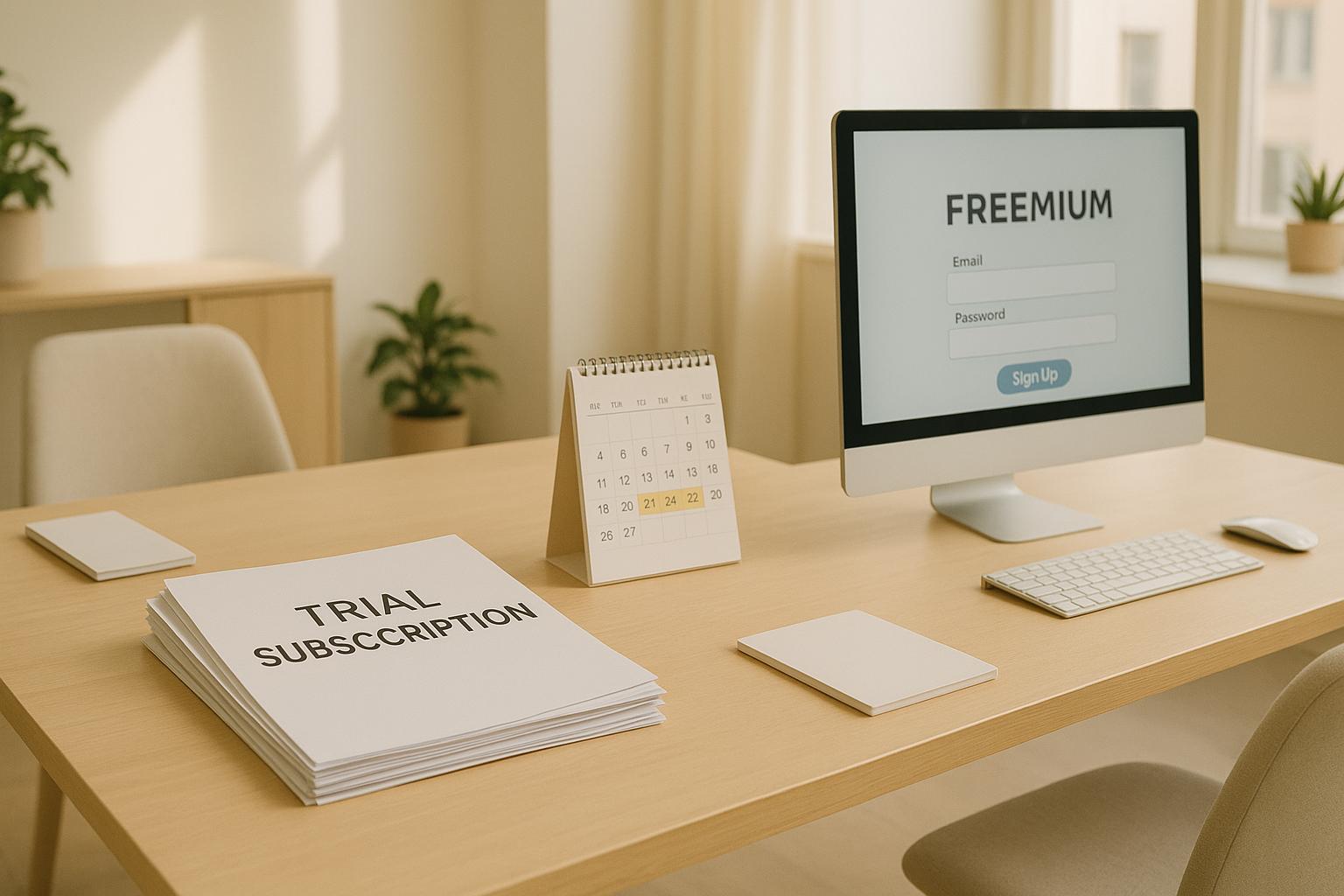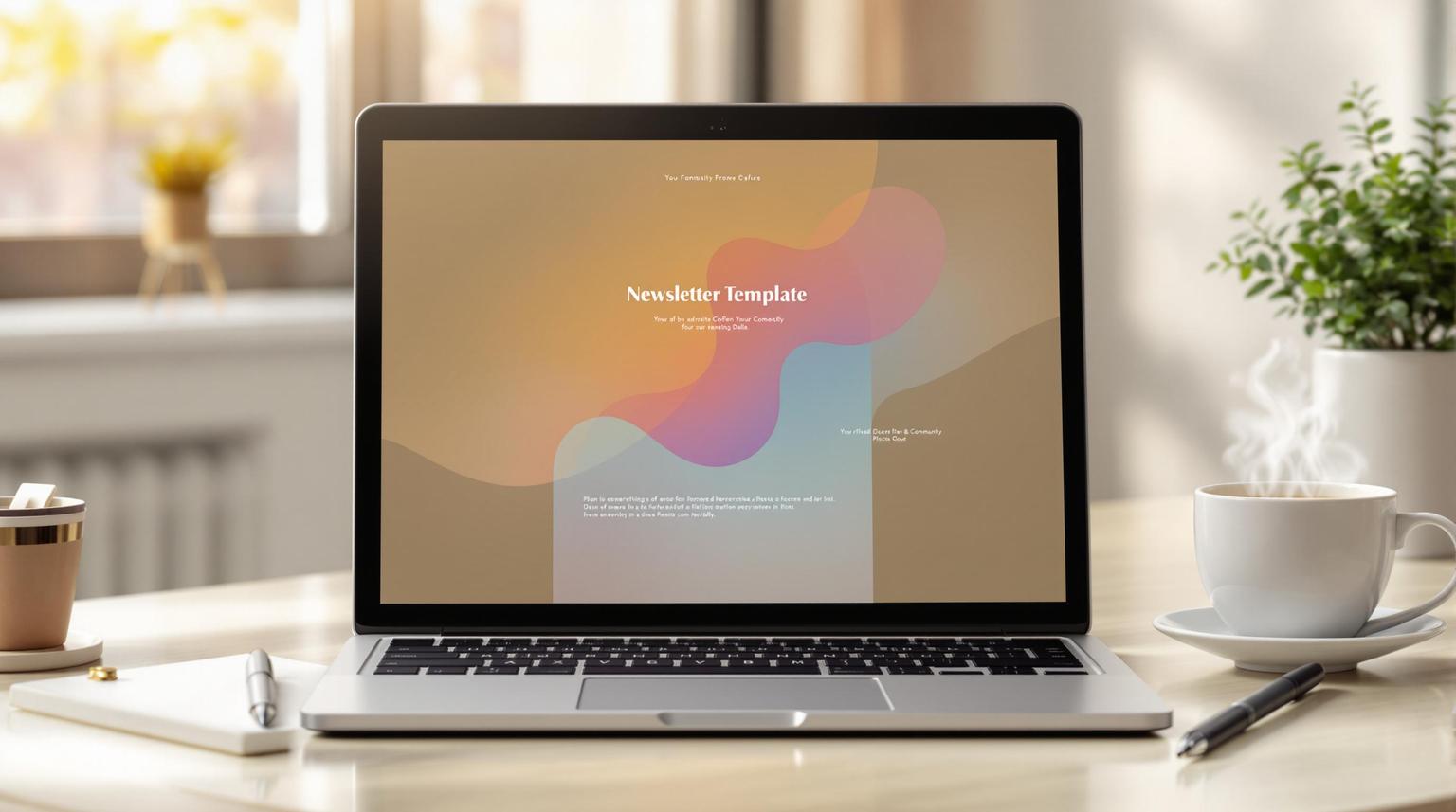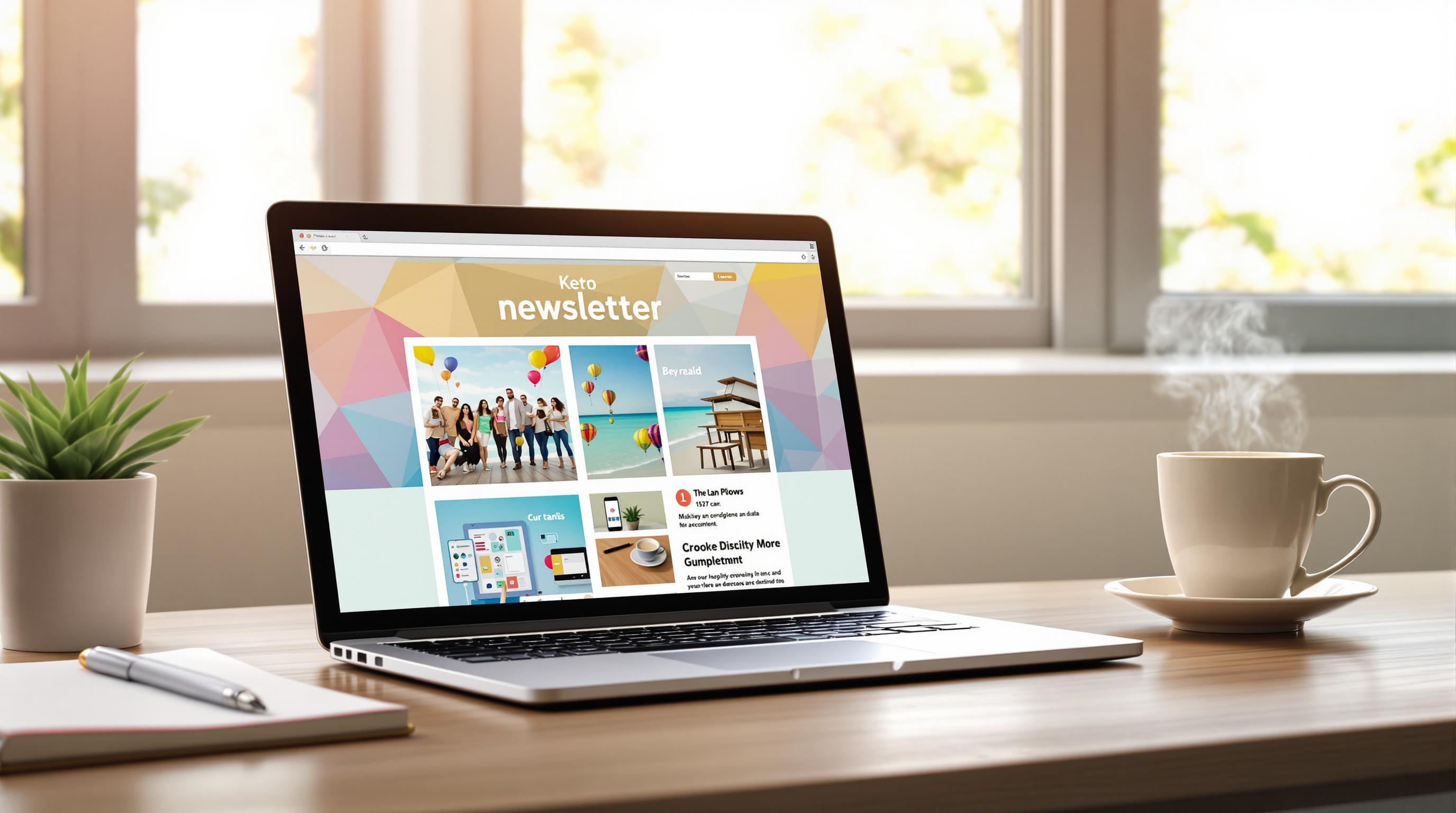- Email Deliverability: Set up SPF, DKIM, and DMARC for better inbox placement. Keep bounce rates below 2-3% and spam complaints under 0.3%.
- Design Limitations: Use tools like Flodesk or Beehiiv for polished, responsive newsletters.
- Analytics: Platforms like Mailchimp and ActiveCampaign help track engagement and improve content with data.
- Choosing a Platform: Match features to your needs. For example:
Quick Comparison
| Platform | Best For | Key Features | Starting Price |
|---|---|---|---|
| Mailchimp | Small businesses | Drag-and-drop editor, basic automation | Free (limited) |
| ActiveCampaign | Advanced users | AI content creation, CRM integration | $9/month |
| Brevo | Growing teams | Unlimited contacts, CRM features | Free (300 emails/day) |
| HubSpot | Enterprise | Integrated CRM, advanced analytics | $45/month |
| MailerLite | Beginners | Simple design tools, automation | Free (limited) |
To succeed, focus on deliverability, design, and analytics. Start with clean email lists, mobile-friendly layouts, and A/B testing to refine campaigns.
Newsletter Platform Issues and How to Solve Them
Fixing Email Deliverability Problems
To make sure your emails actually land in inboxes, start by setting up SPF and DKIM to authenticate your domain. Also, keep your email list in good shape by removing invalid or inactive addresses. Platforms like Indiegraf can help with automated tools to simplify this process. A good rule of thumb: keep bounce rates below 2-3% and spam complaints under 0.3% for providers like Google and Yahoo.
Once your emails are delivered, the next step is ensuring they’re polished and engaging.
Overcoming Limited Design Options
A great newsletter design not only grabs attention but also strengthens your brand. Basic platforms can feel restrictive, but modern tools like Flodesk and Beehiiv offer more freedom. These platforms feature intuitive editors and customizable templates, making it easy to create eye-catching newsletters - even if you’re not a designer.
Here’s a quick comparison of some popular platforms and their design features:
| Platform | Design Features | Starting Price |
|---|---|---|
| Brevo | Basic templates, HTML editor | Free (300 emails/day) |
| ActiveCampaign | Advanced customization, responsive designs | $9/month |
| HubSpot | Enterprise-grade design tools | $45/month |
But design is just one piece of the puzzle. To truly succeed, you need to track how readers engage with your content.
Improving Analytics and Tracking
Tools like Mailchimp and ActiveCampaign provide detailed tracking features that let you monitor key engagement metrics. To boost engagement, focus on personalization strategies like:
- Allowing recipients to select their preferences
- Crafting content based on user behavior
- Customizing material to match individual interests
Analytics tools help you measure how well these strategies work, giving you the insights needed to fine-tune your content. By combining strong deliverability, standout design, and smart analytics, you’ll be on your way to creating newsletters that consistently hit the mark.
I tried every email newsletter tool. Here's the BEST
How to Pick the Right Newsletter Platform
Choosing the right platform can solve common challenges like delivery issues, limited design options, and lack of analytics. The right tool will offer features tailored to your specific needs.
Features to Look for in a Newsletter Tool
A good newsletter platform should ensure reliable email delivery, offer flexible design options, and include detailed analytics to track performance. Platforms like MailerLite stand out with tools such as embedded video and direct social sharing, allowing users to create engaging, on-brand newsletters - no advanced technical skills required.
Comparing Popular Newsletter Platforms
Once you know what features you need, compare top platforms to see which fits your goals. Each platform caters to different business sizes and skill levels. Here's a quick breakdown:
| Platform | Best For | Key Features | Starting Price |
|---|---|---|---|
| Mailchimp | Small businesses | Drag-and-drop editor, basic automation | Free (limited) |
| ActiveCampaign | Advanced users | AI content creation, CRM integration | $9/month |
| Brevo | Growing teams | Unlimited contacts, CRM features | Free (300 emails/day) |
| HubSpot | Enterprise | Integrated CRM, advanced analytics | $45/month |
| MailerLite | Beginners | Simple design tools, automation | Free (limited) |
Scalability is a key factor. For instance, Brevo's free plan allows unlimited contacts, making it a great choice for businesses expecting fast growth. On the other hand, platforms like ActiveCampaign or HubSpot are better suited for established companies needing advanced CRM tools and automation, even if they come at a higher cost.
sbb-itb-2653e19
Steps to Solve Common Newsletter Problems
Tips for Better Newsletter Results
Start by ensuring your SPF, DKIM, and DMARC settings are correctly configured. These settings play a big role in making sure your emails actually reach inboxes, as they improve deliverability. Keep your email lists clean by maintaining bounce rates under 2-3%, following best practices outlined in the deliverability section.
To boost engagement, segment your email lists based on how subscribers interact with your content. For example, tools like Omnisend can automatically group users based on their preferences. This kind of targeted segmentation allows you to craft campaigns that speak directly to specific audience groups.
Long-Term Strategies for Success
Since 85% of users check their emails on mobile devices, mobile optimization is a must. Use responsive designs that adapt to any screen size. Tools like Kit can help ensure your branding stays consistent across all communications.
A/B testing is another great way to improve your newsletter’s performance. Here are some elements to test and track:
| Element | What to Test and Measure |
|---|---|
| Subject Lines | Experiment with different versions to boost open rates |
| Content Layout | See how layout changes affect click-through rates and engagement |
| Sending Times | Analyze which times drive better delivery and conversions |
Analytics are your best friend when it comes to refining your approach. Tools like Campaign Monitor offer features like click maps and activity tracking to help pinpoint what content resonates most with your audience. Use these insights to fine-tune future campaigns and keep your subscribers interested.
Don’t forget to keep an eye on key metrics:
- Spam complaints: Keep these below 0.3%
- Engagement patterns: Understand how subscribers interact with your emails
- Delivery success: Monitor how well your emails perform across various platforms
Conclusion: Improving Your Newsletter Strategy
Managing newsletters effectively begins with addressing key challenges like deliverability, design, and analytics. Among these, deliverability serves as the cornerstone of a successful strategy. By prioritizing these areas, you can create newsletters that deliver results.
Here’s what you need to focus on for a strong newsletter program:
- Technical setup: Ensure domain authentication and maintain a clean email list.
- Design and content: Use mobile-friendly layouts and align designs with your brand.
- Analytics: Track performance and make data-based adjustments.
Newsletter platforms are constantly evolving, offering tools that cater to businesses of all sizes. When paired with a solid strategy, these tools can greatly enhance your newsletter's effectiveness.
Growing your newsletter audience requires ongoing tweaks and attention to performance metrics. Modern analytics tools help you understand subscriber behavior, from engagement rates to optimal delivery times. Regularly reviewing these metrics allows you to adjust your approach to better meet subscriber expectations.
Start by authenticating your domain, cleaning up your email list, and segmenting your audience to deliver personalized content. The combination of a solid technical foundation and engaging material ensures your newsletter provides consistent value while achieving your goals.
With regular updates and focus on these essentials, your newsletter can become a powerful asset for connecting with your audience and driving growth.
FAQs
How to boost newsletter open rate?
Improving newsletter open rates involves a mix of strategy, timing, and personalization. Here’s how you can make a difference:
- Craft Attention-Grabbing Subject Lines: Your subject line is the first thing readers see. Make it short, clear, and engaging while steering clear of spammy language. For example: "Exclusive Tips for Your 2025 Campaign Success."
- Send at the Right Time: Timing matters. According to Campaign Monitor, B2B newsletters perform best when sent Tuesday through Thursday between 10 AM and 2 PM. Use time zone delivery features to increase reach.
- Segment Your Audience: Tailor your content by dividing your audience into smaller groups based on factors like engagement, industry, or purchase history.
- Ensure Technical Readiness: Keep your email list clean and properly authenticated to avoid deliverability issues. This helps your emails land in inboxes, not spam folders.
- Add a Personal Touch: Use personalization techniques like including the recipient’s name, referencing past interactions, or addressing their preferences and location.
- Track Your Metrics: Keep an eye on open rates, click-through rates, and bounce rates to see what’s working. Tools like Mailchimp or Campaign Monitor can help you analyze and refine your campaigns.
"Regular monitoring of key metrics like open rates, click-through rates, and bounce rates can help identify areas for improvement. Analyzing these metrics can provide insights into what works and what doesn't, allowing for adjustments to be made to future campaigns".


